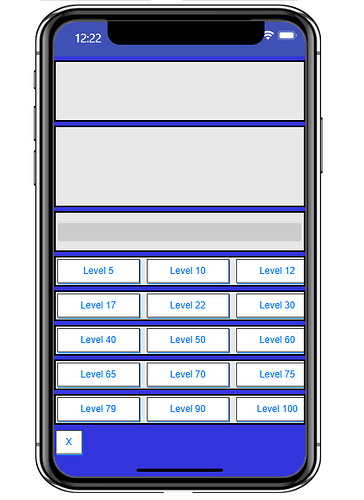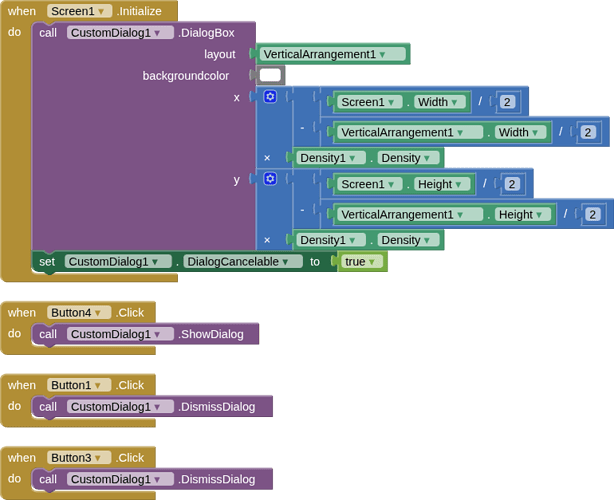Hi
Unfortunately, I'm stuck here, perhaps someone can help me.
When I click a button, my app opens a compound link in the mobile device's installed browser. I want the links to open in an internal web view browser. The links only return a short line of text as a response. When I execute a link, a small window with the link response should open, which should close automatically after 5 seconds. It's important that I can also define the user agents. How do I put the blocks together so that a small web view window with the attached HTML code (as an example) is displayed?
Summary
Interner Browser * { margin: 0; padding: 0; box-sizing: border-box; font-family: 'Roboto', sans-serif; } body {
background: #2c3e50;
color: #ecf0f1;
height: 100vh;
display: flex;
flex-direction: column;
}
.header {
background: #3498db;
padding: 15px;
text-align: center;
box-shadow: 0 2px 10px rgba(0, 0, 0, 0.2);
}
h1 {
font-size: 1.4rem;
font-weight: 500;
}
.browser-container {
flex: 1;
padding: 15px;
display: flex;
flex-direction: column;
}
.browser-window {
flex: 1;
border-radius: 12px;
overflow: hidden;
box-shadow: 0 5px 15px rgba(0, 0, 0, 0.3);
background: white;
}
iframe {
width: 100%;
height: 100%;
border: none;
}
.status {
text-align: center;
margin-top: 15px;
font-size: 14px;
color: #bdc3c7;
}
.loading {
display: flex;
justify-content: center;
align-items: center;
height: 100%;
flex-direction: column;
}
.spinner {
width: 50px;
height: 50px;
border: 5px solid rgba(255, 255, 255, 0.3);
border-radius: 50%;
border-top-color: #3498db;
animation: spin 1s ease-in-out infinite;
margin-bottom: 15px;
}
@keyframes spin {
to { transform: rotate(360deg); }
}
@media (max-width: 600px) {
h1 {
font-size: 1.2rem;
}
.browser-container {
padding: 10px;
}
}
</style>
App Interner Browser
<div class="browser-container">
<div class="browser-window">
<iframe id="browserFrame" src="about:blank"></iframe>
</div>
<div class="status" id="statusText">Bereit</div>
</div>
<script>
document.addEventListener('DOMContentLoaded', function() {
const browserFrame = document.getElementById('browserFrame');
const statusText = document.getElementById('statusText');
// Moderner User-Agent für Android
const userAgent = 'Mozilla/5.0 (Linux; Android 10; Pixel 4) AppleWebKit/537.36 (KHTML, like Gecko) Chrome/91.0.4472.120 Mobile Safari/537.36';
// Funktion zum Laden einer URL
function loadUrl(url) {
if (!url) return;
statusText.textContent = "Lade Seite...";
// Stelle sicher, dass die URL mit http:// oder https:// beginnt
if (!url.startsWith('http://') && !url.startsWith('https://')) {
url = 'https://' + url;
}
// Setze den User-Agent für die Anfrage
const xhr = new XMLHttpRequest();
xhr.open('GET', url);
xhr.setRequestHeader('User-Agent', userAgent);
xhr.onreadystatechange = function() {
if (xhr.readyState === 4) {
if (xhr.status === 200) {
// Erstelle ein Blob mit dem Inhalt und setze es als Quelle
const blob = new Blob([xhr.responseText], { type: 'text/html' });
const blobUrl = URL.createObjectURL(blob);
browserFrame.src = blobUrl;
statusText.textContent = "Geladen: " + url;
} else {
statusText.textContent = "Fehler beim Laden der Seite";
}
}
};
xhr.send();
}
// Beispiel: Eine URL laden (kann durch App Inventor ersetzt werden)
// In der Praxis würden Sie diese Zeile entfernen und die URL von App Inventor übergeben
loadUrl("https://www.example.com");
});
</script>
current composition of the blocks (works as it should)
Sorry for my bad English, many many thanks in advance for your help.




